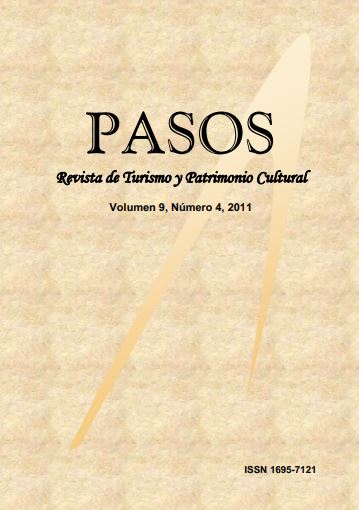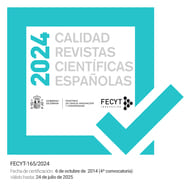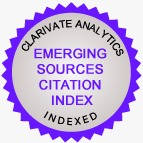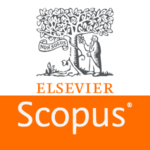P’urhépecha food culture as a great tourist activity in Michoacan
DOI:
https://doi.org/10.25145/j.pasos.2011.09.064Keywords:
Tourism, Traditional cookin, Indigenous communities, P’urhépecha culture, Michoacan, MexicoAbstract
In Mexico exists a great number of indigenous communities of pre-hispanic origin. In the State of Michoacan, which possesses a great cultural richness, the p’urhépecha culture stands out. Be- cause of the state’s richness, great part of its economy is based on national and international tourism. For this reason, a series of studies were realized in order to take further advantage of this situation. The result was the event called “Meeting of Michoacan’s traditional cooking”, which has taken place every year since 2004. In this article, the justification of the above mentioned studies is shown, as well as its first conclusions and the results of the gastronomic event.
Downloads
Publication Facts
Reviewer profiles N/A
Author statements
- Academic society
- PASOS. Revista de Turismo y Patrimonio Cultural
- Publisher
- Instituto Universitario de Investigación Social y Turismo. Universidad de La Laguna (España) - Instituto Universitario da Maia ISMAI (Portugal)
References
Anda, C. 2001 “El Nuevo Michoacán”. México: Grupo Noriega.
Arriaga, C. 1965 “Cocina Michoacana”. Ejemplar disponible a tra- vés de la Secretaría de Turismo del Estado de Michoacán.
Bagirov, A. M. 2003 “An algorithm for clustering based on non-smooth optimization techniques”. International Transactions in Operational Research. Vol. 10. pp. 611-617.
Bowen, J. 1998 “Market segmentation in hospitality research: no longer a sequential process”. International Journal of Contemporary Hospitality Management, Vol. 10 No. 7, pp. 289-296.
Carral, M. 2008 “Segmentos y Mercados. Líderes Mexicanos Edición Especial Turismo”. Tomo CVI. p. 12-14.
Campos, M, Naranjo, E., y Saucedo, A. 2007 “La Competitividad de los Estados Mexicanos 2007”. Monterrey, MEX: EGADE
Cochran, W.G. 1977 “Sampling Techniques”. New York: Wiley
Cooper, D. 2006 “Marketing Research”. New York: McGraw Hill.
Corres, G. 2003 “Atlas Geográfico del Estado de Michoacán”. México: EDDISA.
Crawford-Welch, S. 1991 “Market segmentation in the hospitality industry”. Hospitality Research Journal, Vol. 14 No 2, pp 295-308
Doane, D. 2005 “Applied Statistics in Business and Economics”. EUA: Irwin.
Dubes, P., Jain, A.K. 1976 “Clustering techniques: the user’s dilemma”. Pat- tern Recognition, 8, 247–260.
Grigoroudis, E. 2002 “Satisfaction benchmarking and customer classification: An application to the branches of a banking organization”. International Transactions in Operational Research. Res. 9. pp. 599-618.
Hawkins, D.M., Muller, M.W., y Krooden, J.A. 1982 “Cluster analysis”. In: Hawkins, D.M. (ed.), Topics in Applied Multivariate Analysis. Cambridge University Press, Cambridge, pp. 303–356.
Everitt, B. 2001 “Cluster Analysis”. London: Arnold.
Figueroa, S. 2007 “La Ruta de Don Vasco”. Lunwerg editores. México.
Griffiths, W.E. 1993 “Learning and practicing econometrics”. John Wiley & Sons, Inc
Hair, Anderson, Tatham y Black. 1995 “Multivariate Data Analysis”. New Jersey, USA.
Prentice Hall. INAH 1988 “Atlas cultural de México. Instituto Nacional de Antropología e Historia”. Editorial Planeta. INEGI 2009 “Reporte de los Estados Unidos Mexicanos”. México, D.F.Loker, E.L. y Purdue, R.R. 1992 “A benefit-based segmentation of a non-resident summer travel market”. Journal of Travel Research, Vol 31 No. 1, pp 30-35
López, G. 2009 “Cocina Tradicional Michoacana: Las Nuevas Generaciones”. Gobierno del Estado de Michoacán. Mé- xico.
Meyer, D. 2002 “Turismo y Desarrollo Sostenible”. Bogotá: Universidad Externado de Colombia.
Oh, M. y Jeong, M. 1996 “Improving marketers’ predictive power of customer satisfaction on expectation-based target market levels”. Hospitality Research Journal, Vol. 19 No. 4, pp 65-85.
Pérez, A. 2004 “Michoacán”. México. Uribe y Ferrari Editores.
Raya, José. 2004 “Estadística aplicada al Turismo (Statistics applied to Tourism)”. España: Prentice Hall.
Reid, R. y Bojanic, D. 2005 “Hospitality Marketing Management”. 4th ed., Wiley, Hoboken, NJ, p. 123.
Ríos, A. 2004 “Michoacán: Impresiones de un Viaje en el umbral del siglo XXI”. España: Lunwerg.
Secretaría de Turismo de Michoacán 2008 “Turismo Michoacán: Memoria Sexenal 2002-2008”. Morelia, MEX: SECTUR.
Sereno, Y.2008 “Los sabores del tiempo, gastronomía moreliana”. Ejemplar disponible a través de la Secretaría de Tu- rismo del Estado de Michoacán
Serrato, M. 2009 “Perfitur 2008. Perfil del turista que visita el Esta- do de Michoacán”. Programa editorial del Tecnológi- co de Monterrey.
Serrato, M. 2008 “Perfitur 2007. Perfil del turista que visita el Esta- do de Michoacán”. Programa editorial del Tecnológi- co de Monterrey.
Subhash, C. 2002 “Multiple objective optimization problems in sta- tistics”. International Transactions in Operational Research. Res 9. pp. 415-425.
WTO. 2006 “Poverty Alleviation Through Tourism – A Compilation of Good Practices”. Madris, SPA: WTO.
Downloads
Published
How to Cite
Issue
Section
License
I confirm that the work is original (of my/our authorship), and that it will not be submitted to other journals or publications until the final resolution of the review process in PASOS, RTPC.
I authorize the publication of my work by PASOS, PSTN of free and open access in any of the formats that I deem appropriate, for an indefinite period of time and as a non-remunerated collaboration.
Likewise, the author(s) understands that the published work may be linked or deposited on any server or included in other publications (republication), provided that the new place and/or new edition references the original publication and acknowledges the authorship and copyright ownership of PASOS RTPC publications.
Authors understand that a plagiarism-self-plagiarism check will be performed, and the article may be removed at any time from the editorial flow.










